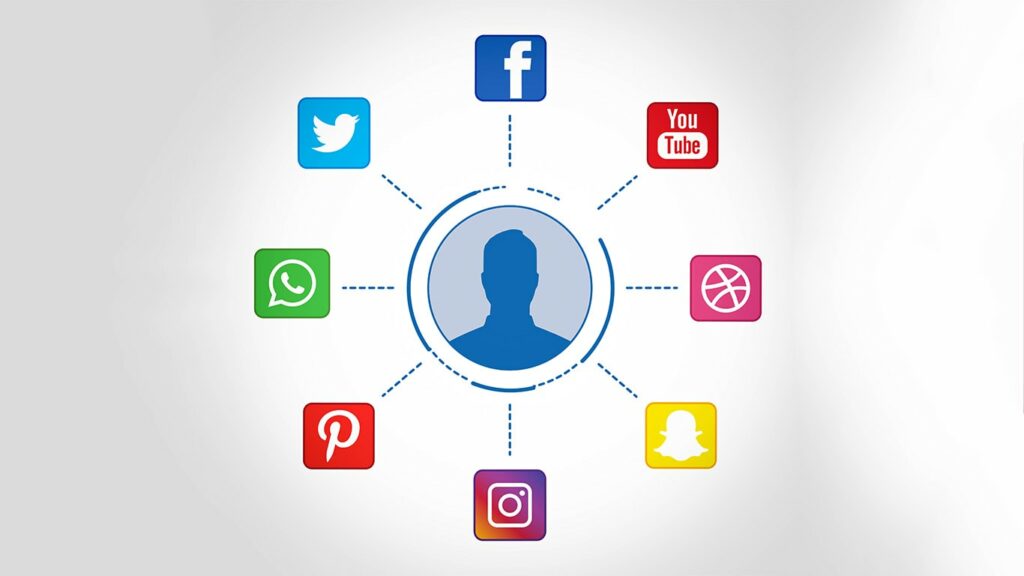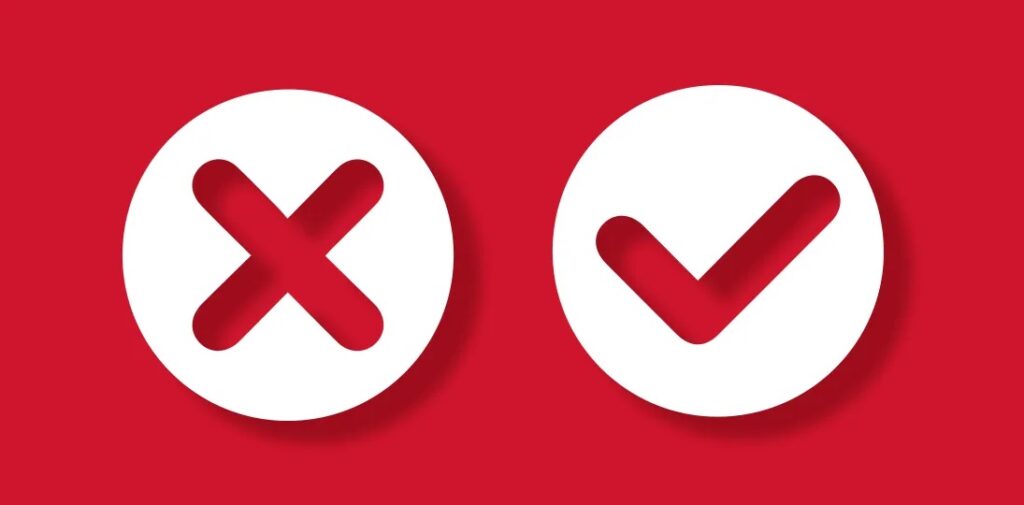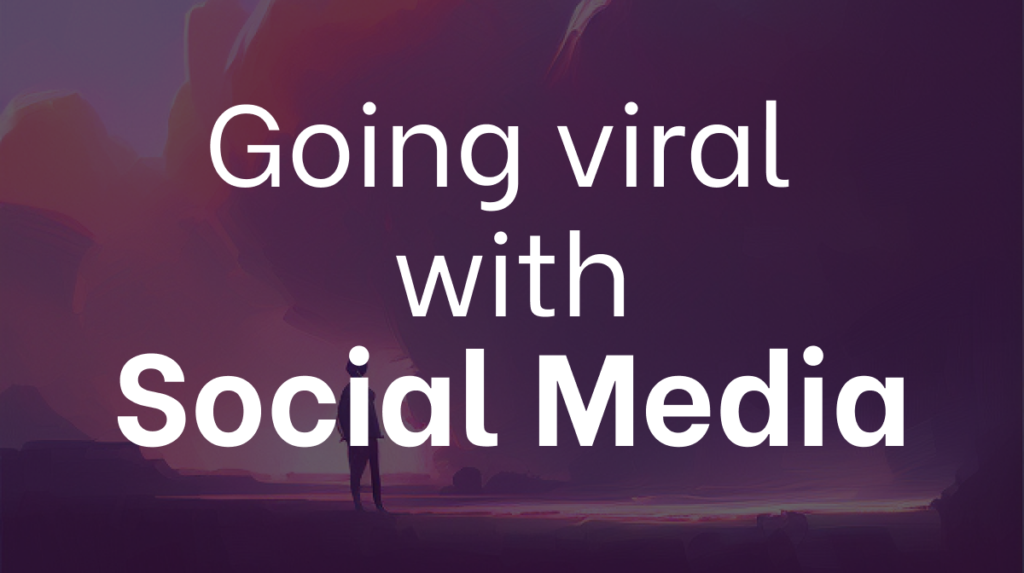Social media has become a powerful tool for businesses to reach more customers, increase visibility, and ultimately, grow their business.
Going viral on various social media sites can be a great way to promote your business and reach a wider audience. It’s an affordable marketing strategy that helps you get noticed by people who may not have heard about your product or service otherwise.
But going viral isn’t just about luck – it takes planning and strategic execution. You need to know how to craft content that resonates with people and has a higher chance of being shared. You also need an understanding of the different social media platforms and how to maximize each one for greater reach.
In this article, we’ll discuss the basics of social media success and provide tips on how you can use social media applications and it to help your business grow.
Benefits of Social Media for Businesses

Social media has become a powerful tool for businesses to build relationships, increase brand awareness, generate leads, and ultimately increase sales. With billions of users worldwide, social media platforms like Facebook, Instagram, Twitter, and LinkedIn have revolutionized the way businesses communicate with their customers and reach new audiences.
One of the most significant advantages of social media is its ability to reach a much broader audience than traditional marketing methods. With just a simple post or campaign, businesses can instantly spread their message across multiple platforms and reach thousands, if not millions, of people. This level of exposure is something that was not possible before the advent of social networking sites and media.
Social media also offers businesses the opportunity to engage with their followers and customers on a more personal level. By interacting with internet users more, businesses can create strong relationships and increase customer loyalty. These relationships can help businesses understand their customers’ needs and preferences better, allowing them to tailor their products and services accordingly.
Moreover, social media can be an effective tool for generating leads and increasing sales. By running competitions or offering exclusive discounts for followers, businesses can capture more leads that may convert into customers in the future. Social media platforms also allow businesses to target specific demographics and audiences, making it easier to reach the people who are most likely to be interested in their products or services.
However, to reap the benefits of social media, businesses need to use it effectively. Simply creating a social media account and posting sporadically will not yield the desired results. Instead, businesses need to have a well-defined social media strategy that includes clear goals, a target audience, and engaging content.
One crucial aspect of social media strategy is understanding the social media platform it’s nuances and using them to your advantage. For example, Instagram is a highly visual platform, making it an ideal place for businesses to showcase their products or services through visually appealing images and videos. On the other hand, Twitter is a text-based platform, making it suitable for businesses to share quick updates or news about their brand.
Another critical aspect of social media strategy is consistency. Regularly posting engaging content can keep followers interested and create a sense of community around the brand. Posting too infrequently, on the other hand, can cause followers to lose interest and disengage from the brand.
It’s also essential for businesses to monitor their social media channels and respond promptly to comments and messages from customers. This shows that the business values its customers and is willing to engage with them, building trust and strengthening relationships.
Social media also offers businesses the opportunity to track their performance and adjust their strategy accordingly. Platforms like Facebook and Instagram provide analytics tools that allow businesses to track engagement, reach, and other metrics to see what’s working and what’s not. This data can help businesses make informed decisions about their social media strategy and refine it for better results.
Read more:
- What Are the Top Benefits of Social Media Marketing for Small Businesses?
- Unlocking the Mystery of Social Media: A Guide for Beginners
- The Complete Guide to Social Media for Small Business
Strategies for Using Social Media to Reach Your Target Audience

Social media is a powerful tool for businesses to reach their target audience and build relationships with them. However, with so many platforms and users, it can be challenging to know how to effectively connect with your desired audience. Here are five strategies for using social media to reach your target audience:
Identify your target audience
Before you can effectively reach your target audience, you need to know who they are. Start by creating buyer personas, which are fictional representations of your ideal customers. This will help you understand their needs, interests, and pain points. With this information, you can tailor your social media content and strategy to better resonate with your target audience.
Choose the right social media platforms
Different social media platforms attract different demographics and users. For example, Instagram is popular among younger audiences, while LinkedIn is more popular among professionals. By understanding where your target audience is spending their time, you can choose the right platforms to focus your marketing efforts on on.
Create engaging content
Once you’ve identified your target audience and chosen the right platforms, it’s time to create content that will engage and resonate with them. Your content should be informative, entertaining, and valuable to your audience. Use visual content, like images and videos, to capture attention and tell a story. Use hashtags and keywords to make it easier for your target audience to find and engage with your content.
Engage with your audience
Social media is a two-way conversation, so it’s important to engage with your social network audience. Respond to comments and messages promptly, and ask questions to encourage engagement. Use social media listening tools to monitor conversations around your brand and industry and respond appropriately.
Use paid social media advertising
Social media advertising can be a cost-effective way to reach your target audience. Platforms like Facebook and Instagram allow you to target specific demographics, interests, and behaviors with your ads. By creating targeted ads, you can reach the right people at the right time with the right message.
By following these five strategies, you can maximize the reach of your social media presence and get more eyes on your business – ultimately helping it grow!
Different Platforms and How to Leverage Each for Maximum Success

Now that you understand the potential benefits of social media, let’s look at the different social networking platforms and how to leverage each for maximum success.
YouTube
YouTube is a video-sharing platform that has been around for over a decade. It has over 2 billion monthly active users, making it the second-largest search engine in the world after Google. One of the unique features of YouTube is that it is a search engine for video content. This means that optimizing your videos for search can help them get discovered by a wider audience. Use relevant keywords in your video titles, descriptions, and tags to make it easier for users to find your content.
The quality of your video content is crucial for success on YouTube. Invest in good equipment, such as cameras and microphones, and create videos that are visually appealing and engaging. Consider using storytelling techniques to keep your audience hooked and watching until the end. Collaborating with other YouTubers can help you reach new audiences and build relationships with other creators in your niche. Consider collaborating on a video or series with a creator whose audience aligns with your own.
TikTok
TikTok is a newer platform that has taken the world by storm, particularly among younger generations. It has over 1 billion monthly active users and offers unique opportunities for businesses and creators to reach their target audience. TikTok has a unique style and format that sets it apart from other platforms. Embrace this style by creating short, visually appealing videos that capture your brand’s personality. Consider incorporating music, transitions, and special effects to make your content stand out.
TikTok is known for its viral challenges and hashtags. Using popular hashtags and participating in challenges can help your content get discovered by a wider audience. Consider creating your own branded challenge or participating in existing ones.Collaborating with popular TikTok creators can help you reach new audiences and tap into their fanbase. Consider partnering with creators whose audience aligns with your own brand and working together on a series or campaign.
Facebook remains the dominant player among social media platforms. Boasting more than two billion active users, it is an indispensable tool for social media marketers and businesses aiming to extend their reach. The platform offers various features, including groups and ads, which allow businesses to focus on their target audience and enhance brand visibility. Additionally, the messenger service enables companies to provide real-time customer service by communicating directly with their customers.
Facebook’s vast user base makes it an essential platform for businesses to engage with their customers. By leveraging the platform’s features, businesses can tailor their messaging to specific audience segments, increasing their likelihood of reaching potential customers. Additionally, Facebook’s ad targeting options are highly effective at reaching new customers who may be interested in a business’s products or services. By displaying ads to users based on demographics, interests, and behaviors, businesses can efficiently increase their brand awareness and drive traffic to their website or landing page.
Moreover, Facebook’s group feature allows businesses to create a community of loyal customers who share common interests or experiences. By creating a group, businesses can foster a sense of community, facilitate discussions, and gain valuable insights into their customers’ preferences and opinions. This strategy can be especially effective for small businesses that rely heavily on word-of-mouth marketing and referrals.
Finally, Facebook Messenger provides an additional channel for businesses to provide customer service and support. The service allows businesses to respond quickly to customer inquiries, resolve issues in real-time, and provide personalized recommendations. By utilizing this service, businesses can improve customer satisfaction, increase loyalty, and ultimately drive sales.
For businesses seeking to engage with their customers regularly, Twitter is a crucial platform. Its 280-character limit encourages concise messaging, making it ideal for quickly updating customers about changes in your business and for engaging with them. Twitter’s use of hashtags and trending topics allows businesses to easily find conversations that are relevant to their industry or target audience, making it an effective way to extend their reach.
With Twitter, businesses can quickly respond to customer inquiries and feedback, providing real-time customer support and instant messaging. The platform’s fast-paced nature means businesses can react swiftly to trends and events, making it an effective tool for staying up-to-date with industry news and connecting with customers.
Moreover, Twitter allows businesses to showcase their brand personality and engage with customers in a more casual, personable way. This can be done by sharing behind-the-scenes content, promoting employee achievements or using humor in tweets.
Twitter can also help businesses keep a pulse on their industry, competitors and target audience. By monitoring hashtags and keywords relevant to their business, they can gather valuable insights on market trends, customer preferences and industry developments.
Instagram has become one of the most popular visual platforms online today, with over one billion active users. It provides businesses with the perfect opportunity to create eye-catching visuals such as infographics and videos that are sure to attract viewers who are looking for something different from what is being posted elsewhere online.
With Instagram’s hashtag challenges and user-generated content (UGC), businesses can further increase their reach on the platform by inspiring others to engage with their content. This makes it an excellent way to boost brand awareness and loyalty quickly.
Hashtag challenges are a popular way to increase engagement on Instagram. By creating a unique and catchy hashtag, businesses can encourage users to create content related to their brand or product. This can be anything from photos to videos, and it encourages users to share their content using the hashtag, helping to increase visibility and reach.
User-generated content (UGC) is another effective way to boost brand awareness on Instagram. By encouraging users to create content featuring a brand’s product or service, businesses can showcase their products in an authentic and relatable way. UGC can also help businesses to build a loyal community of followers who feel invested in the brand and its products.
Measuring the Performance of Your Social Media Campaigns

Measuring the performance of your social media campaigns is essential to understanding whether your efforts are achieving your marketing goals. Here are some key metrics and methods for measuring the performance of your own social media marketing campaigns:
Engagement Metrics
Engagement metrics measure the level of interaction that users have with your content. These include likes, comments, shares, and clicks. By tracking these metrics, you can understand how well your content is resonating with your audience and make adjustments to your strategy as needed.
Follower Growth
Follower growth measures the number of new followers gained over a specific period of social media usage. This metric can help you understand whether your content is reaching a wider audience and whether your social media strategy is effective in attracting and retaining followers.
Conversion Rates
Conversion rates measure the percentage of social media users who take a specific action, such as making a purchase, filling out a form, or signing up for a newsletter, after engaging with your social media content. By tracking conversion rates, you can understand whether your social media campaigns are driving tangible business outcomes.
Reach and Impressions
Reach measures the number of unique users who see your content, while impressions measure the number of times your content is displayed to users. These metrics can help you understand the scope of your social media campaigns and the potential audience that your content is reaching.
Return on Investment (ROI)
ROI measures the financial return on your social media campaigns. To calculate ROI, you need to measure the costs of your campaigns (such as advertising spend, staff time, and content creation costs) against the revenue generated by your campaigns. By calculating ROI, you can understand the financial impact of your social media campaigns on your business.
A/B Testing
A/B testing involves creating two versions of a piece of content or campaign and testing them with different groups of users to see which performs better. A/B testing can help you understand what content resonates best with your audience and optimize your social media campaigns accordingly.
Social Listening
Social listening involves monitoring social media conversations and mentions of your brand, competitors, or industry topics. By tracking social media conversations, you can understand how your audience is talking about your brand and gain insights into their needs and preferences.
Harnessing Influencer Marketing for Your Business
When it comes to digital marketing though, it’s all about the influencers. Influencer marketing, in particular, is one of the most powerful forms of marketing available – and fortunately, one of the least expensive.
As a business owner, you can tap into the power of influencers by finding and leveraging those with significant influence on popular social media websites. These are people who have already built relationships with their followers – essentially giving them a platform to spread your message more quickly and effectively.
There are several ways you can use an influencer to promote your business:
- Allow an influencer to review your product or service on their platform
- Ask them to be a part of a campaign (e.g., “ambassador”)
- Offer incentives such as exclusive discounts for followers
- Solicit their opinion on relevant topics
- Use their work as content for your website or blog
- Feature them in your advertising campaigns
- Utilize their hashtag for better visibility
Ultimately, working with an influencer can help your business reach more potential customers and boost sales at minimal cost – ensuring that going viral pays off in the long run!
Typical Mistakes Businesses Make on Social Media

You have strategies to utilize and great ideas to post on social media, but don’t forget: failing to plan is planning to fail! Many businesses make the same mistakes when starting out on the social networking media, so it is important to be aware of them and avoid them.
Focusing on Quantity over Quality
Many businesses focus on creating a large volume of social media content without considering the quality of the content. Posting low-quality content can turn off your audience and damage your brand’s reputation. It’s better to focus on creating high-quality content that is relevant and valuable to your target audience.
Ignoring Social Media Analytics
Businesses that don’t track their social media analytics miss out on valuable insights into their audience’s behavior and preferences. Analytics can help you understand which content resonates with your audience and adjust your strategy accordingly. It’s important to regularly monitor your social media analytics to optimize your campaigns and improve performance.
Lack of Consistency
Inconsistency in social media posting can cause confusion and disengagement among your audience. Posting regularly and consistently can help you build a loyal following and maintain engagement with your audience. Creating a social media content calendar can help you plan and schedule your posts in advance.
Ignoring Negative Feedback
Ignoring negative feedback on a social media site can escalate issues and harm your brand’s reputation. It’s important to respond promptly and professionally to negative feedback and resolve issues to the best of your ability. Handling negative feedback effectively can help you build trust and loyalty among your audience.
Too Much Self-Promotion
Constantly promoting your products or services can come across as spammy and turn off your audience. Instead, focus on creating content that provides value and engages your audience. Strive to strike a balance between promoting your brand and creating content that resonates with your audience.
Lack of Engagement
Social media is a two-way conversation. Businesses that fail to engage with their audience miss out on opportunities to build relationships and increase customer loyalty. Responding to comments, mentions, and messages in a timely and personalized manner can help you build a loyal following and strengthen your brand’s reputation.
Failure to Adapt
Social media is constantly evolving, and businesses that fail to adapt risk falling behind. Keeping up with the latest trends and best practices can help you stay relevant and effective on social media. It’s important to regularly review your social media strategy and adjust it as needed to stay ahead of the competition.
Conclusion
In conclusion, social media can be a powerful tool for business growth when used strategically. By leveraging the right platforms, crafting engaging content, and targeting the right audience, businesses can tap into the limitless potential of the digital world. With the right plan in place and a commitment from the business, social media can be an effective and efficient tool for connecting with customers and driving growth.

